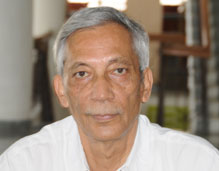Emerging Need for Nepali Ecological Task Force (ETF) Units
The disaster assistance being provided by India (Operation Maitri) and other countries in the aftermath of the devastating earthquake is an essential first step to help Nepal cope with the disaster. However, the tragedy in Nepal not only requires short-term disaster relief action but also the long-term reconstruction of dwelling units, roads and other infrastructure as well as ecological restoration. It is suggested that like its counterpart in India, the Nepal Army can raise an Ecological Task Force (ETF) made up of former ex-servicemen, with adaptations and modifications to suit its requirements. Former soldiers of the Nepal Army and also ex-servicemen/Gorkha (all ranks) that have served the Indian Army can be made into a nucleus of ETF which can assist in the ecological reconstruction of Nepal.
In the case of India, an ETF has the headquarter (HQ)-cum-administrative element and a company under an officer, three Junior Commissioned Officers (JCOs) and about 99 men. The total strength of an ETF consisting of HQ and one company may be three officers, five JCOs and 139 other ranks, making a total of 147 all ranks. Two companies would be nearly 250 all ranks.
Historically, the process of deploying of an ETF goes through the following stages:
- There has to be a problem of environmental degradation demanding military-type discipline and dedication.
- There is a need to have political will. This would include allocation of the necessary budgets.
- The presence of a sizeable ex-servicemen population residing in the region.
- The bureaucracy needs to be motivated to implement the scheme and there is a need for a well-oiled civil-military interface.
- Regular officers should be available to be posted by the Military Secretary’s Branch of Army Headquarters, failing which the Territorial Army officer’s intake can be beefed up as a long-term strategy.
The ETF is raised and embodied for the task and may be disembodied after the job is done or may be re-deployed on other ecological tasks. So far, eight ETF units have been raised in India since 1980s. Till date, no ETF has been disbanded. All the ETF which have been raised after having completed their initial task of restoration have handed over the eco-regenerated area to the concerned state department and have got redeployed elsewhere within the state. This is because restoration of ecology is a long-term process when environmental degradation is widespread.
If we relate the above process with the problem at hand in Nepal, environmental destruction has occurred on a large scale which demands the constitution of a long-term disciplined force. Nepal has a number of former soldiers who will be willing to be embodied for the job in their local regions. Further, the disaster has narrowed the gap or any difference in the perception in civil-military relations. A national tragedy automatically leads to closer civil-military cooperation. It has been the Indian experience that even JCO’s and senior Non-Commissioned Officers can perform leadership tasks related to reconstruction and ecology.
If adequate budget is provided for, then it will give muscle to the political will. In the case of India, the budget to raise and employ an ETF is shared by the state government and the Ministry of Environment, Forests and Climate Change (MoEFCC ) of the Union Government. Exceptions include the ETF of the Union Territory of Delhi and Himachal Pradesh which are fully financed by the state governments themselves. Two ETF units in Assam on the other hand are financed fully by the MoEFCC. The rough cost of an ETF embodied for eight months in a year is Rs 1.83 crores for five years (2006 figures).
ETF is a low-cost, high-performance concept. In Nepal, the dedicated ex-servicemen are a national asset. Thus, if suitable funding is provided by the international community through the UN, ecological reconstruction of Nepal can begin in an organized manner by Nepali ETF. As the Indian assistance helps Nepal in the initial difficult stages, it will be the responsibility of the people of Nepal to reconstruct their environment. This may take minimum of ten years or longer. Nepal can assess and survey its own requirements and raise suitable ETF units made up of its former soldiers of the Indian Army, former soldiers of Nepal Army, para-military and the police. The initial ETF may need to be based on engineers to help in repair and reconstruction of infrastructure.
Views expressed are of the author and do not necessarily reflect the views of the IDSA or of the Government of India








